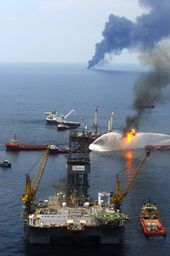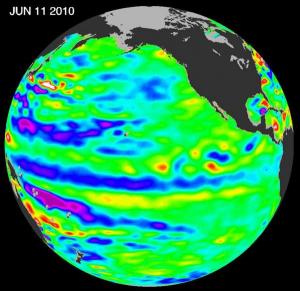
© Peter Andrew Bosch/Miami HeraldSmoke rising in the background from an in-site burning of oil caught on the water surface, as workmen on the relief well in foreground are tripping in the well bore.
Winds in excess of 45 miles per hour days away from the
Deepwater Horizon gusher in the Gulf of Mexico spill could force at-sea workers to abandon their oil-collection efforts for as long as two weeks, the head of the national response effort said Friday.
That timetable would conservatively unleash another half-million barrels of oil into the sea -- twice the
Exxon Valdez spill. Using upper-end federal estimates of the leak, 840,000 barrels would gush out. That's 35 million gallons.
Coast Guard Adm. Thad Allen described the cut-and-run plan in a conference call to reporters at noon Friday -- about six hours before the National Weather Service announced that a tropical depression had formed in the Caribbean.
''Realistically, over an abundance of caution,'' the admiral predicted that
Deepwater Horizon's well would remain uncapped for ''14 days'' if the storm headed into the area of the Gulf where the ships are collecting oil.

